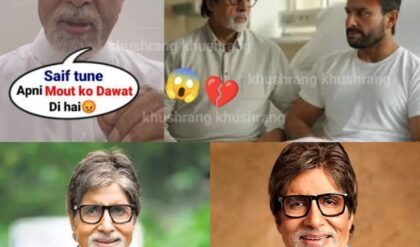The influence of Korean cinema on Bollywood aesthetics isn’t matched by engagement with its deeper themes as scene after scene of seemingly vacuous violence testify, shorn of their original context

No Copy Paste: A still from Rocky Handsome Photo: | Courtesy: IMDB
Right before the iconic bloodbath-on-corridor sequence in Park Chan-wook’s Oldboy (2003), Dae-Su (Choi Min-sik) enters his captor’s office, threatening to pull out a tooth for each of the 15 years he was held captive unless he’s told who wanted him imprisoned. The truth comes out after the sixth tooth. Known for embracing the violence of the films he is ‘inspired’ by and making it his own—even Reservoir Dogs director Quentin Tarantino applauded the Mexican standoff in Kaante’s (2002) climax, scored to Lucky Ali’s ‘Maut’— Sanjay Gupta replicated the teeth-on-keyboard image exactly in Zinda (2006), an unofficial remake, and didn’t change a beat about the corridor fight either in the movie starring Sanjay Dutt.
Gupta’s initiatives inspired a slew of knockoffs: the Bhatts remade A Bittersweet Life (2005) into Awarapan (2007) and Chaser (2008) into Murder 2 (2011); Mohit Suri remade I Saw the Devil (2010) into Ek Villain (2014); My Sassy Girl (2006) was remade into Ugly Aur Pagli (2008), and Man from Nowhere (2012) into Rocky Handsome (2016). The ultra-violent action and actors’ pronounced theatricality in Korea’s slick thrillers struck a chord in Bollywood years before the K-Pop wave and its fan armies.

A still from The man From Nowhere Photo: | Courtesy: IMDB
Gulshan Devaiah recalls watching a YouTube clip of the Paris Fashion week, where some K-Pop celebrities showed up. “And everyone lost their shit!” says the Dahaad (2023) actor. “I thought, ‘who are these people? And why haven’t we crossed over like this?’” Devaiah also starred in Duranga (2022-23), an official remake of the Korean series Flower of Evil (2020), and a whodunit Footfairy (2020), which echoed the open-ended Memories of Murder (2003) and Zodiac (2007). Not a fan of the ‘adaptation’ process of lifting from existing films, Devaiah talks about how his curiosity gets the better of him in some cases. “I think we (Indian filmmakers) are not good at copying; it takes effort to steal,” he says. “As the story has already been told, it is possible to do a decent remake only if you have something to say.”
The violence in Korean films can feel vacuous when lifted into the Indian context because the Indian filmmakers are probably only looking to imitate the aesthetics.
Besides the violence and the twist, a snazzy visual style, too, has been a major import from Korean to Hindi cinema. It’s been interesting to note what the filmmakers choose to replicate frame to frame—like Gupta did with the violence in Zinda—and what they shy away from, like the incest subplot in Oldboy is replaced by misogyny to make it more family-friendly. According to Ribhu Dasgupta, director of Te3n (2016), a remake of Montage (2013), it’s important to adapt according to one’s own cultural sensibility. “Cool or stylized, action or drama, it has to be relatable to our audience,” says Dasgupta. “It cannot be alienating.” This explains, perhaps, why some subplots are diluted. Moreover, the film certification board that is relatively lax towards graphic violence tends to be stricter when it comes to any creative choice that could muddy the cultural fabric.
Similarly, Suri’s Ek Villain is unable to capture the heft of I Saw the Devil’s last scene in which Lee Byung-hun’s character—a stone-cold assassin through the entire runtime—breaks down after avenging his partner. It’s an unexpected, emotionally-heightened moment in a film that plays out like a cat-and-mouse thriller. Does Suri miss the point? “Maybe it’s done in a certain manner for a reason, which you and I will not agree with,” reasons Devaiah, the Shaitan (2011) actor. “Mohit (Suri)’s films have catered to the masses, and his interpretation of grief and alcoholism has always been broad.” Indeed, Ek Villain turned out to be one of the biggest hits of 2014, grossing around Rs 170 crore. Meanwhile, Nikhil Nagesh Bhat’s Kill (2024), closer to an Indonesian or Thai film in terms of the relentless gory violence (along with muted Bollywood melodrama), wasn’t as successful.
The violence in Korean films can feel vacuous when lifted into the Indian context because the Indian filmmakers are probably only looking to imitate the aesthetics. Subhajit Chatterjee, a faculty member at the Department of Film Studies, Jadavpur University, notes how Indian filmmakers trying to replicate South Korean violence in an Indian film often lack the historical context of such violence. According to Chatterjee, there are tropes and motifs embedded in the violence that are instantly recognisable to an average Korean, but won’t make sense to the average Indian.
Moreover, factors like population, theatre density, socio-economic conditions ensure that not everyone is looking for the kind of complex ending that might be fair game in a generic Korean film. It has to be turned into a cathartic climax in a Hindi film. “People still give me grief about the (open-ended) climax of Footfairy,” says Devaiah. “Some of us might enjoy grappling with no closure at the end of a film. But some people need that illusion of closure, probably because they don’t have it in real life… It’s probably important for their mental health to at least get closure in films.”
While the onus of depicting violence is surely on filmmakers, Dasgupta also believes they should be “unflinching” about it when the narrative demands it. “One can deal with it artistically and dramatically if needed,” he says, pointing out that if someone uses violence merely for effect, it would show. Devaiah often finds himself wondering how Korean films execute the “insanely difficult” illusion of violence on screen. It’s a bit of a dichotomy for someone like him—curious about how they achieve it from a craft perspective, but also knowing that the audience might not be able to stomach such sequences. Whatever the method, the reaction is usually binary: it either works or it doesn’t. In Hindi films it surely doesn’t work more often than it does. But, if intermittent ‘inspiration’ is going to be the Bollywood strategy, Devaiah leaves us with a maxim: “Be creative, and have fun with it.”





